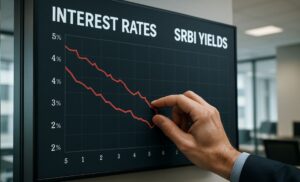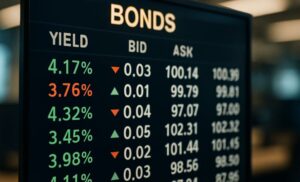Policy Asymmetry
In March 2025, the global economy faced a complex interplay of protectionist policies, monetary tightening, and strategic fiscal interventions, leading to significant market repercussions. In the United States, escalating trade tensions were marked by new steel and aluminum tariffs of up to 50%, prompting retaliatory measures that the OECD warned could result in a 0.5% to 1.5% increase in global inflation by 2026. As a result, JP Morgan raised the probability of a U.S. recession to 40%, citing policy-driven uncertainty amidst a cooling inflation rate of 2.0% year-over-year in February. Retail sales experienced a decline of 1.3% month-over-month, and corporate investment began to pull back, leading analysts from Moody’s and Goldman Sachs to revise recession risks upward to 35% and 20%, respectively. Federal Reserve Chair Jerome Powell maintained a cautiously optimistic tone; however, markets began pricing in stagflation risks as the Atlanta Fed’s Q1 GDP tracker hinted at potential contraction.
In Europe, Germany announced a €500 billion fiscal stimulus package—the largest since reunification—bypassing debt brakes for defense spending and infrastructure investment. This stimulus is projected to boost Eurozone GDP growth by 0.6% to 1.8% by 2026, although Bundesbank bond yields spiked by 35 basis points due to supply concerns. The European Central Bank (ECB) cut rates by 25 basis points to 2.5% on March 6 but signaled potential future hikes if the German stimulus reignites inflation, which is projected to increase Eurozone CPI by 0.4% to 0.9%. Meanwhile, during China’s National People’s Congress (NPC) meeting held from March 5 to March 12, the government set a growth target of approximately 5% for 2025, emphasizing tech self-reliance and stabilization of the property sector while prioritizing structural reforms over large-scale stimulus.
The global markets reflected these dynamics with notable divergences and volatility. In equities, the tech sector saw declines, driven by fears surrounding an AI bubble. Defensive sectors such as energy performed well. In bond markets, German 10-year yields surged to 2.8%, the highest level since 2011, while U.S. Treasury yields stabilized at around 4.2% as the Fed paused its rate hikes. Looking ahead, several implications arise from these developments: the policy asymmetry between U.S. protectionism and Europe’s fiscal expansion creates growth divergence that complicates G20 coordination; inflation pressures driven by tariffs could delay easing cycles from both the Fed and ECB; and equity valuations remain vulnerable amid heightened macro uncertainty.
Product Recommendation
| EQUITY FUND | |
|---|---|
| MGSED A | MGSED invests in Sharia-compliant Equities Abroad listed in the Sharia Securities List. Categorized as a Long-Term investment with high risk. Investors bear the risk associated with the equity portfolio. |
| MASED A | MASED invests in Sharia-compliant Equities in Asia listed in the Sharia Securities List. Categorized as a Long-Term investment with high risk. Investors bear the risk associated with the equity portfolio. |
For More Information
Contact Mandiri Investasi – (021) 526 3505
Mandiri Investasi Whatsapp – 0816 86 0003
Mandiri Investasi Email – [email protected]
Mandiri Investasi Website – www.mandiri-investasi.co.id
DISCLAIMER
The opinions expressed in the article are for general informational purposes only and are not intended to provide specific advice or recommendations for individuals or specific mutual fund or investment products. It is intended solely to provide education about the financial industry. Views reflected in the content may change at any time without notice. All performance data and investment returns mentioned in this article cannot be used as a basis for calculation to buy or sell a mutual fund. This data is performance records based on historical data and is not a guarantee of future mutual fund performance. Investment through mutual funds carries risks. Investors are required to read and understand the prospectus before deciding to invest through mutual funds.
Written by











Leave a Reply